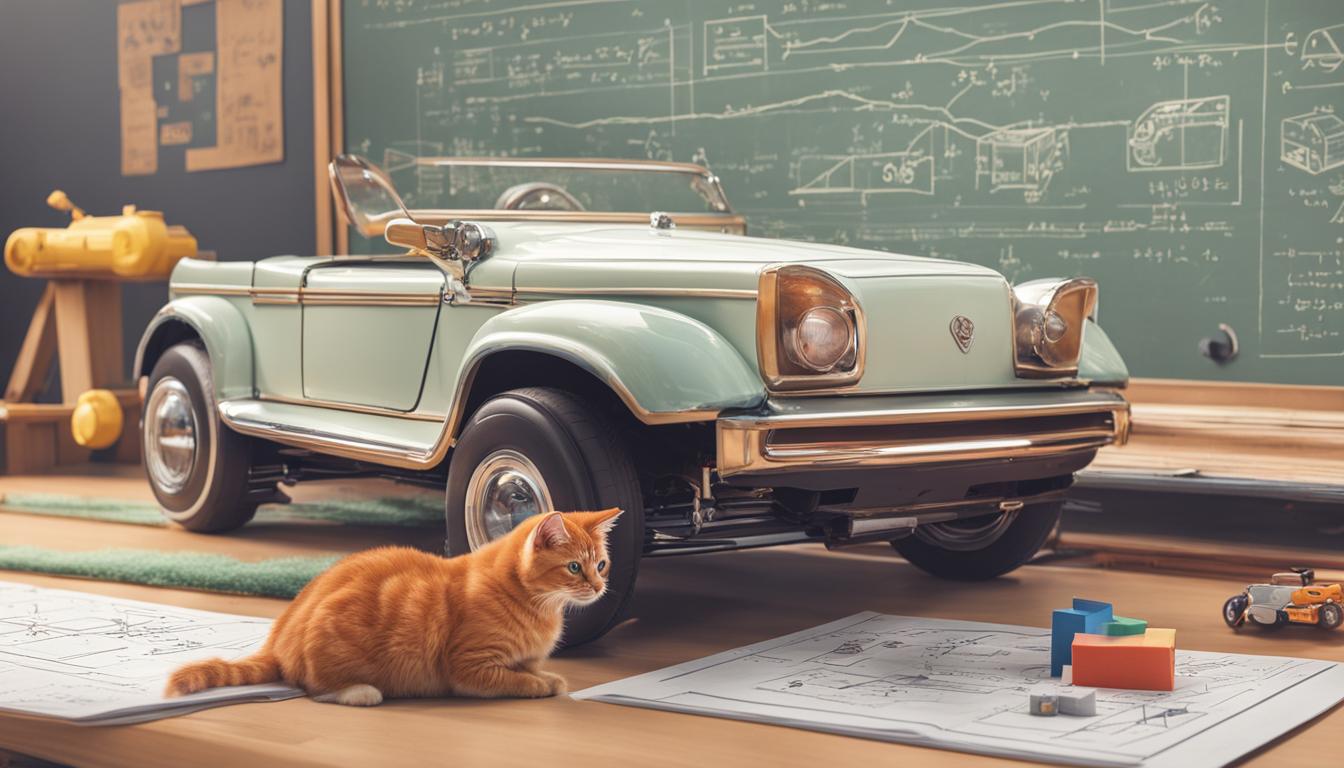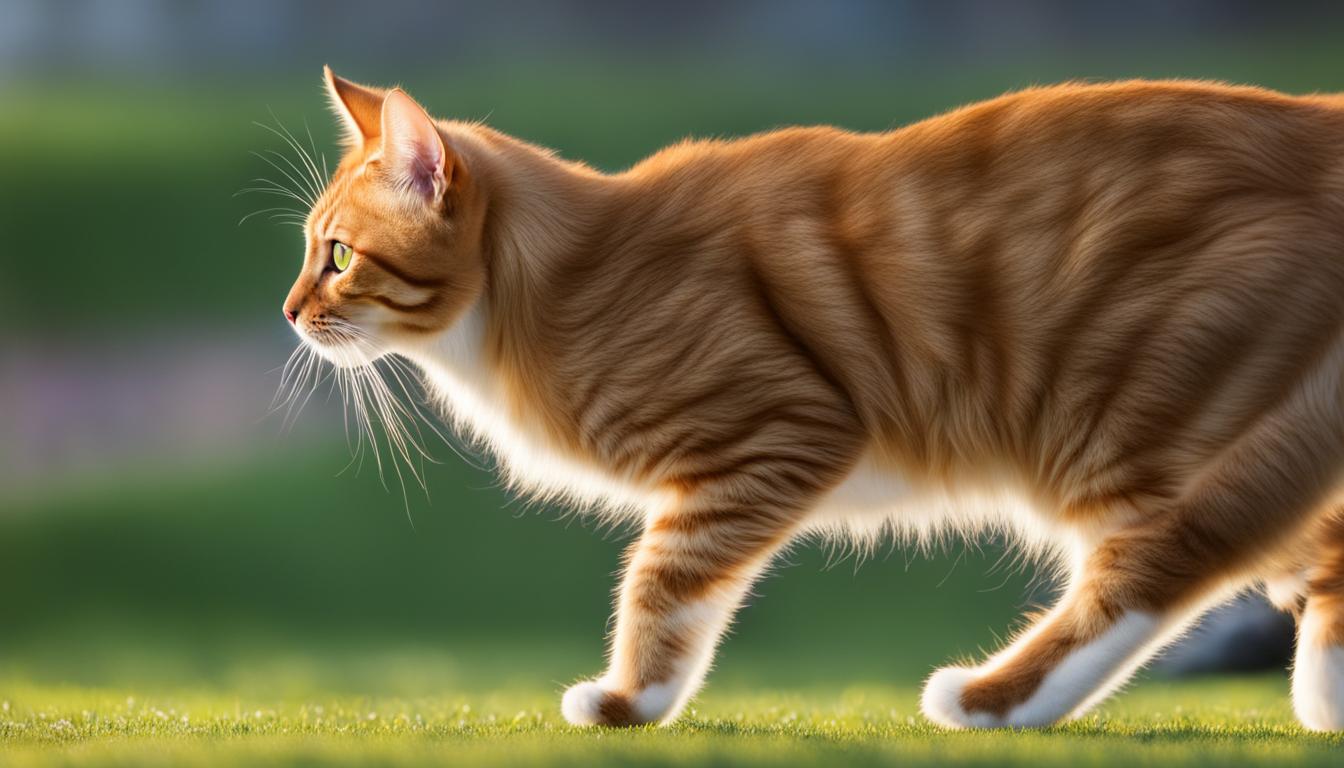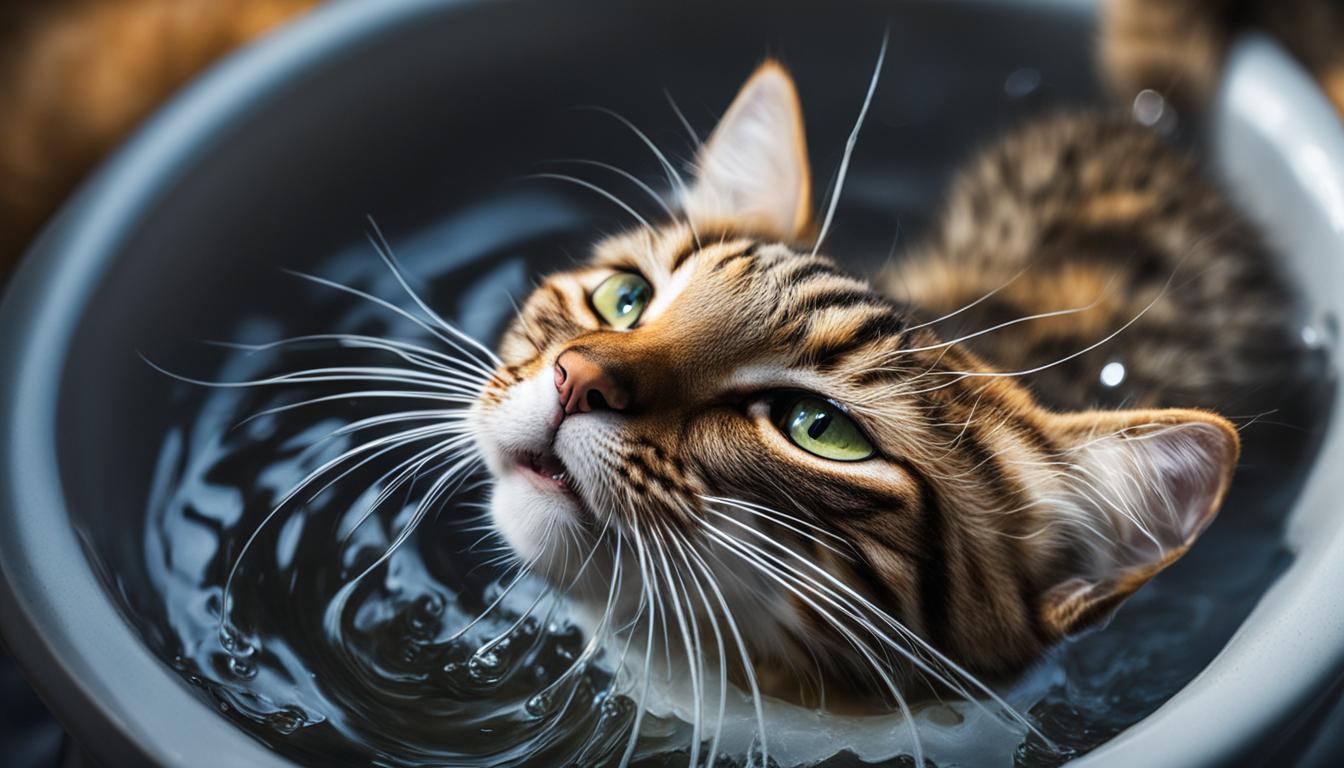As a curious cat enthusiast, I’ve always wondered about the physical principles behind a cat’s stretch. It’s fascinating to watch them twist and contort their bodies in midair, landing gracefully on their feet. How do they do it? What allows them to defy gravity with such agility? Let’s dive into the science behind one of nature’s most impressive acrobatic acts – the cat stretch.
Cats possess a unique combination of flexibility, reflexes, and an innate understanding of the laws of physics. It turns out they aren’t defying any physical principles but rather using them to their advantage. When a cat falls through the air, it employs a series of rapid leg movements and tail maneuvers to quickly orient itself and land safely. This lightning-fast reflex enables them to twist and turn mid-fall, showcasing their incredible agility.
A cat’s flexible spine and split body allow it to rotate in different directions simultaneously. This flexibility is crucial in executing complex stretches and contortions. What’s even more astonishing is that studies show over 90% of cats survive falls from high-rise buildings. Their ability to reach terminal velocity ensures that the impact is evenly distributed across their bodies, significantly increasing their chances of survival.
Key Takeaways:
- The physical principles behind a cat’s stretch involve flexibility, reflexes, and exploiting the laws of physics.
- Cats have flexible spines and split bodies, enabling them to rotate in different directions simultaneously.
- Over 90% of cats survive falls from high-rise buildings, thanks to their ability to reach terminal velocity.
- Cat stretching is a remarkable display of agility and adaptability.
- Their acrobatic skills are a result of evolution and the need for survival in the wild.
Comparing Cat Stretching to Other Animals
When it comes to flexibility, cats are often considered the masters. But how do they compare to other animals in the animal kingdom? Let’s take a look at how cat stretching stacks up against their larger feline counterparts.
Stretching in Big Cats vs Domestic Cats
Big cats, such as cheetahs and tigers, may be larger in size, but they share many similarities when it comes to stretching. Both domestic cats and big cats have highly flexible spines and joints, allowing them to execute intricate stretches and contortions. However, the scale and range of their movements can vary.
Domestic cats are known for their ability to arch their backs and extend their paws, which allows for a deep stretch that helps them maintain their agility. On the other hand, big cats rely on their long limbs and powerful muscles to stretch and propel themselves during hunting or territorial displays. These variations in stretching behaviors highlight the adaptability and versatility of feline flexibility across different species.
| Domestic Cats | Big Cats | |
|---|---|---|
| Range of Motion | Arch backs, extend paws | Utilize long limbs, powerful muscles |
| Stretching Purpose | Maintain agility | Hunting, territorial displays |
| Size | Varies, typically smaller | Large |
As we can see, both domestic cats and big cats have adapted their stretching abilities to suit their specific purposes and environments. Whether it’s maintaining flexibility for everyday activities or preparing for a hunt, feline flexibility remains an awe-inspiring feat.
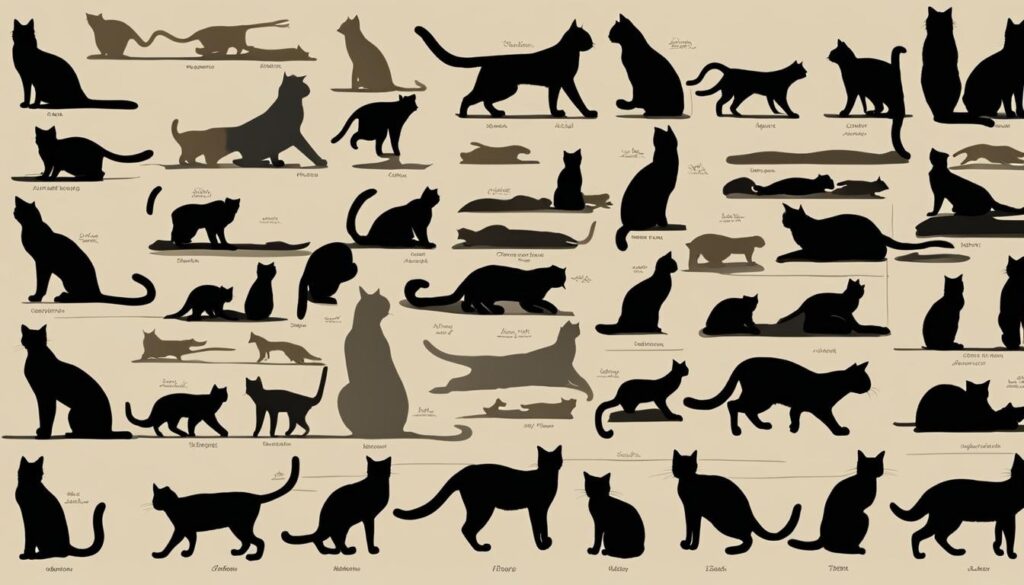
Adaptations for Climbing and Hunting
One of the primary reasons for the evolution of cat stretching is their ancestors’ need to climb and hunt effectively. Stretching helps cats maintain their balance and agility while climbing trees and leaping from branch to branch. By twisting and contorting their bodies, cats can achieve optimal body positioning and quickly change direction mid-air, giving them a significant advantage when pursuing prey or evading predators.
| Benefit | Adaptation |
|---|---|
| Enhanced Balance | Flexible Spines and Joints |
| Quick Directional Changes | Mid-air Body Contortions |
| Improved Agility | Rapid Reflexes |
Retaining Natural Instincts
Even though domestic cats no longer need to hunt for survival, their stretching abilities remain intact. This is because stretching is a deeply ingrained instinct that helps cats maintain their physical well-being and overall health. Regular stretching exercises help keep their muscles limber, prevent stiffness, and promote good joint mobility. The evolutionary legacy of stretching is embedded in the DNA of cats, reminding us of their wild ancestry.
Techniques to Improve Flexibility in Cats
If you want to help your furry friend improve their flexibility, there are several techniques you can incorporate into their daily routine. From interactive play to grooming sessions, these activities can promote joint mobility and keep your cat limber and agile.
One effective technique is to engage in interactive play sessions with toys that encourage stretching and jumping. Toys like feather wands or laser pointers can entice your cat to leap and twist, promoting flexibility in their muscles and joints. Not only is this a great workout for your cat, but it also provides mental stimulation and strengthens your bond with them.
“Interactive play sessions with toys that encourage stretching and jumping can keep cats active and limber.”
Providing vertical spaces, such as cat trees and shelves, can also help improve your cat’s flexibility. Cats naturally love to climb and perch, and these vertical spaces allow them to engage in their instinctual behaviors. Climbing and jumping up and down can stretch their muscles and keep their joints mobile. Plus, it gives them a sense of security and territory.
Regular grooming sessions are another opportunity to promote flexibility in cats. Brushing your cat’s fur not only helps maintain a healthy coat but also stimulates blood flow to their muscles and joints. This increased circulation can improve joint mobility and reduce stiffness. Additionally, it can be a calming and bonding experience for both you and your cat.
Here are some techniques to improve your cat’s flexibility:
- Engage in interactive play sessions with stretching and jumping toys
- Provide vertical spaces like cat trees and shelves for climbing
- Regular grooming sessions to stimulate blood flow and maintain joint mobility
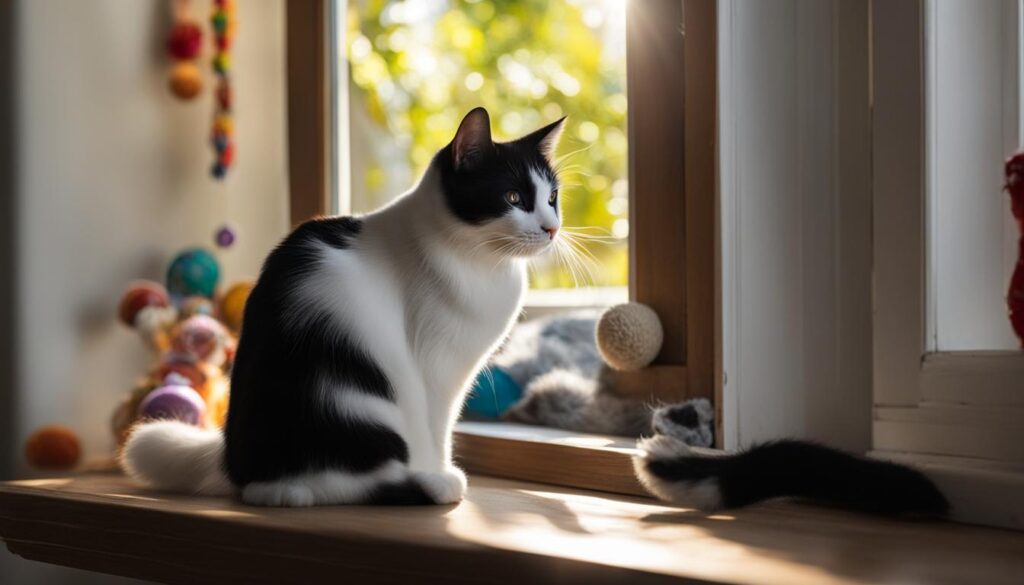
| Technique | Benefits |
|---|---|
| Interactive play sessions | Promotes flexibility, mental stimulation, and bonding |
| Vertical spaces | Encourages climbing and stretching, provides a sense of territory |
| Regular grooming sessions | Stimulates blood flow, improves joint mobility |
Factors Affecting a Cat’s Stretch
When it comes to a cat’s ability to stretch, there are several factors that can have an impact. One of the key factors is age. As cats get older, their muscles and joints may become less flexible, making stretching more challenging. This can be due to age-related changes, such as the loss of muscle mass and decreased elasticity in the connective tissues.
Another factor that can affect a cat’s stretch is their weight and body condition. Overweight cats may have difficulty performing certain stretches due to increased strain on their joints and reduced mobility. Maintaining a healthy weight through proper nutrition and regular exercise can help support a cat’s flexibility.
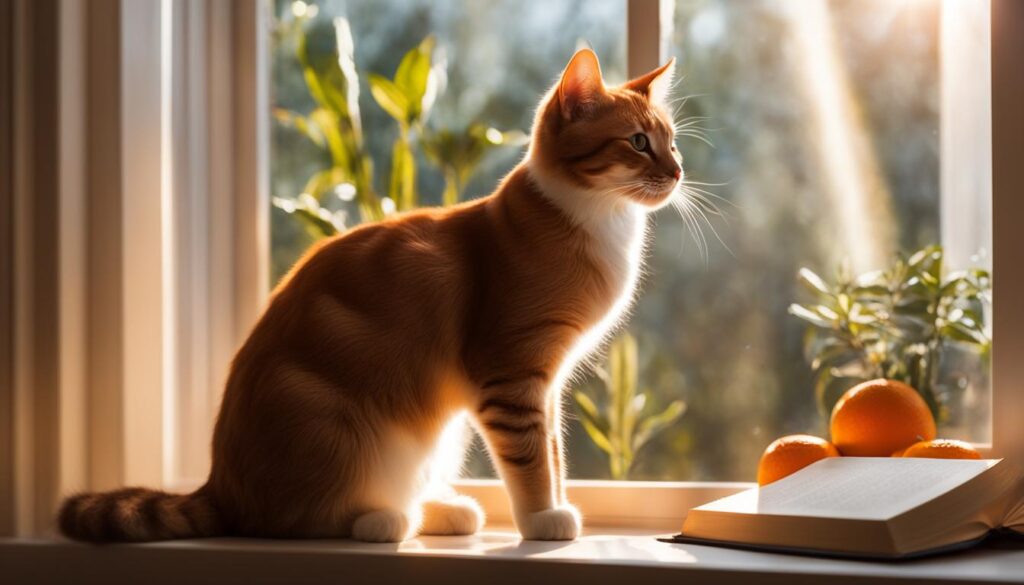
Additionally, certain medical conditions, such as arthritis or other degenerative disorders, can impact a cat’s range of motion and make stretching more difficult. It’s important to monitor a cat’s mobility and consult with a veterinarian if there are any concerns about their comfort or ability to stretch.
By understanding the factors that can affect a cat’s stretch, cat owners can take proactive steps to support their feline companion’s flexibility and overall well-being. Regular exercise, a balanced diet, and veterinary care tailored to the cat’s specific needs can all contribute to maintaining and improving their stretching abilities.
References:
- “The impact of age on joint Health in cats.” The Veterinary Journal. (link)
- “Obesity in cats: Impact on health and disease.” Journal of Feline Medicine and Surgery. (link)
- “Arthritis in cats: What are the options?” Journal of Feline Medicine and Surgery. (link)
Conclusion
In conclusion, cats’ stretching abilities are truly fascinating and showcase their incredible physical agility. Through a combination of flexible spines, split bodies, and lightning-fast reflexes, cats can twist and turn mid-air, ensuring a graceful landing on their feet. This skill is not a defiance of physics but rather a clever exploitation of the laws of nature.
The evolution of cat stretching can be traced back to their wild ancestors’ need for survival and agility. Over time, domestic cats have retained these stretching abilities, adapting them to their more sedentary lifestyles. Understanding the evolutionary history of cat stretching highlights the adaptability and physical prowess of these feline creatures.
To help improve a cat’s flexibility, there are various techniques that cat owners can incorporate into their daily routines. Interactive play sessions, vertical spaces, grooming, and stretching exercises can all contribute to keeping cats active, limber, and healthy. It is also important to consider factors such as age and weight, as these can affect a cat’s ability to stretch and maintain flexibility.
By understanding the physical principles behind a cat’s stretch and implementing appropriate techniques, cat owners can better support their feline companions’ natural behaviors and overall well-being. So, let’s embrace the wonder of cat stretching and provide our beloved cats with the care and environment they need to thrive!
FAQ
What are the physical principles behind a cat’s stretch?
Cats use their flexible skeletons and agile bodies to exploit the laws of physics, utilizing leg movements and tail maneuvers to rapidly reorient themselves and land safely when falling.
Do big cats have the same stretching abilities as domestic cats?
Big cats, such as cheetahs and tigers, possess similar stretching skills but on a larger scale. They rely on their long limbs and powerful muscles to stretch and propel themselves during hunting or territorial displays.
How did cat stretching evolve?
The evolution of cat stretching can be traced back to their ancestors’ need for agility and survival in the wild. Flexible spines and joints developed, allowing for adaptation to various environments and hunting strategies.
How can I improve my cat’s flexibility?
Engaging in interactive play sessions, providing vertical spaces like cat trees, regular grooming, and incorporating stretching exercises into their routine can help improve a cat’s flexibility.
What factors can affect a cat’s ability to stretch?
Age, weight, and conditions like arthritis can impact a cat’s range of motion and flexibility. Regular exercise and a balanced diet can help mitigate these factors and promote better flexibility.



